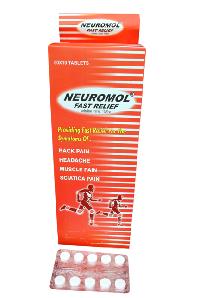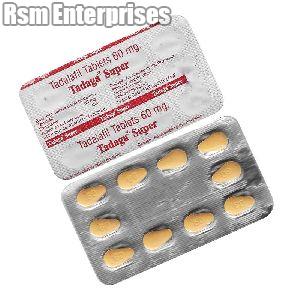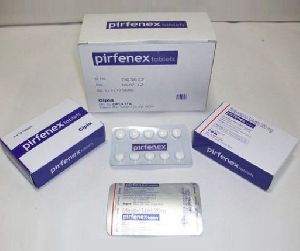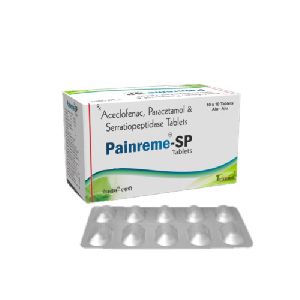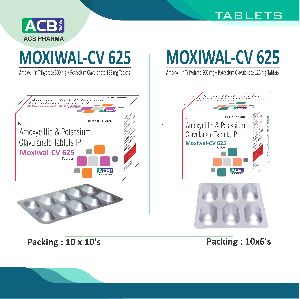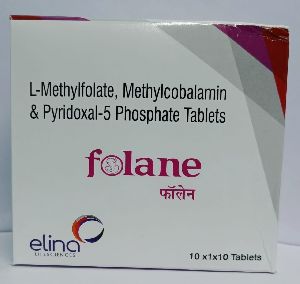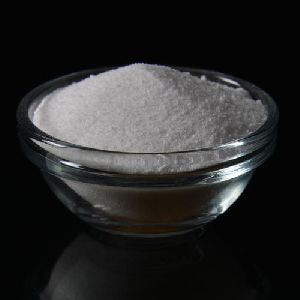Listing ID #707137
Company Information
Ask for more detail from the seller
Contact SupplierWe are offering debetics tablet.
strychnos potatorum
ixora coccinea
salacia prinoides
curcuma longa
emblica officinalis
symplocos racemosa
aerva lanata
vetiveria zizanioides
methi
asphaltum punjabinum
strychnos potatorum
traditional medicinal uses: according to ayurveda, seeds are acrid, alexipharmic, lithotriptic and cure strangury, urinary discharges, head diseases etc. Roots cure leucoderma whereas fruits are useful in eye diseases, thirst, poisoning and hallucinations. The fruits are emetic, diaphoretic alexiteric etc. According to unani system of medicine, seeds are bitter, astringent to bowels, aphrodisiac, tonic, diuretic and good for liver, kidney complaints, gonorrhea, colic etc.
ixora coccinea
a spreading hard wooded shrub grows up to 1 meter in height. Leaves simple, opposite, elliptic, ovate, sessile, and coriaceous. Flowers scarlet red colored in dense corymbose cymes. Fruits globose, fleshy and purple when ripe, containing single seed. Distribution – growing wildly throughout western ghats, also in gardens.
medicinal properties : plant pacifies vitiated pitta, skin diseases, colic, flatulence, diarrhea, indigestion, ulcers,wounds, and used as antiseptic. Antioxidant: phytochemical screening showed the flower extract to possess flavonoids, steroids, tannin. Ic showed strong reducing power and total
useful part : root, leaves, flowers. •
salacia prinoides
several species in this genus of plant have been used in traditional medical systems for thousands of years, particularly in the ayurveda system from india. Uses have included treatment of diabetes, obesity, gonorrhea, rheumatism, itching, and asthma. Recently, it has gained popularity in the us, japan, and other countries for the prevention of diabetes and obesity.
salacia prinoides is a climbing smooth herb found in thickets and forests
in the lowest of altitude. It is considered invigorating to the circulation. Roots of this plant are considered astringent and abortifacient.
curcuma longa
curcuma longacúrcuma is a small perennial herb native to india bearing many rhizomes on its root system which are the source of its culinary spice known as turmeric (cúrcuma - rizoma secco in polvere) and its medicinal extract called curcumin (cúrcuma extracto refinado). Curcuma longa extract has significant effects in the laboratory on arthritis, amyloid-beta (alzheimer's polymers), cancer and diabetes. In summary it is:
• anti-oxidant;
• anti-arthritis
• anti-platelet;
• anti-cancer effects: causes apoptosis in various cancer cell types including skin, colon, forestomach, duodenum and ovary in the laboratory; we await clinical trials in humans;
• anti: -viral, -fungal, -bacterial effects (inhibits helicobacter pylori);
• anti-diabetic effects
the results of a recent study from sweden indicateantioxidant capacity.
emblica officinalis
in traditional indian medicine, dried and fresh fruits of the plant are used. All parts of the plant are used in various ayurvedicunani medicine [jawarish amla] herbal preparations, including the fruit, seed, leaves, root, bark and flowers.[12] according to ayurveda, amla fruit is sour (amla) and astringent (kashaya) in taste (rasa), with sweet (madhura), bitter (tikta) and pungent (katu) secondary tastes (anurasas).[12] its qualities (gunas) are light (laghu) and dry (ruksha), the post-digestive effect (vipaka) is sweet (madhura), and its energy (virya) is cooling (shita).[10]
according to ayurveda, amla is specific to pitta due to its sweet taste and cooling energy.[12] however, amla is thought to balance vata by virtue of its sour taste, and kapha due to its astringent taste and drying action. It may be used as a rasayana (rejuvenative]] to promote longevity, and traditionally to enhance digestion (dipanapachana), treat constipation (anuloma), reduce fever (jvaraghna), purify the blood (raktaprasadana), reduce cough (kasahara), alleviate asthma (svasahara), strengthen the heart (hrdaya), benefit the eyes (chakshushya), stimulate hair growth (romasanjana), enliven the body (jivaniya), and enhance intellect (medhya).[12] according to unani system of medicine the mizaj of amla is sard khushk so that it is very good remedy for haar amraz[hot diseases][
symplocos racemosa
uses : bark is astringent, refrigerant, ophthalmic, expectorant, anti-inflammatory, hypothermic, astringent, depurative, febrifuge, haemostatic,stomachic and suppurative.
bark is used to treat haemorrhage, acne and pimples, eye diseases, spongy and bleeding gums, leucorrhea, wounds, ulcers, tumors, leprosy, skin diseases, asthma, bronchitis, dropsy, arthritis, fever, menstrual disorders, liver diseases, menorrhagia, diarrhea, dysentery, and bowel complaints. A decoction of the bark or wood is used as a gargle for giving firmness to spongy and bleeding gums. It is one of the constituent of a plaster used to promote maturation of boils and other malignant growth.
balipoovu (aerva lanata) flowers of kerala
balipoovu (aerva lanata) is a herbaceous plant that produces clusters of tiny white to pale red flowers.
the other names of balipoovu are cherula and cherpula. Balipoovu is also spelt balippoovu, balipoove, balippoove, bali poovu and other variations.this herb is used in ayurveda medicine. The main usable part is root.the plant is often sites as the best cure for kidney stones.there are different decoctions prepared from this plant, which are used in treating such serious diseases like gonorrhea, problems to kidney and bladder, diabetes, etc. Decoctions prepared from the root of this plant are also used in the treatment of different kinds of headaches.
aerva lanata belongs to the family amaranthacea
vetiveria zizanioides
traditional use: india is inhabited by a wide variety of tribal populations who dwell in forested areas and depend on surrounding resources for their livelihood. Among the several hundreds of plants which are gathered bytribal populations, khas grass, particularly in north indian plains, takes a leading role. Various tribes usethe different parts of the grass for many of their ailments such as mouth ulcer, fever, boil, epilepsy, burn,snakebite, scorpion sting, rheumatism, fever, headache, etc. The santhal tribes of bihar and westbengal use the paste of fresh roots for burn, snakebite and scorpion sting, and a decoction of the roots asa tonic for weakness; the lodhas of west bengal use the root paste for headache, rheumatism andsprain, and a stem decoction for urinary tract infection; the mandla and bastar tribes of madhya pradesh use the leaf juice as anthelmintic; the tribes of the varanasi district inhale the root vapour for malarial fever. The root ash is given to patients for acidity by the oraon tribe. Likewise, there are very many different applications of the plant for different ailments among different ethnic tribes (jain 1991; singh & maheshwari 1983). Apart from the medicinal uses, the culms along with the panicles form a good broom for sweeping. The culms and leaves are also extensively used by the tribes and villagers for thatching their huts, mud walls, etc. Some tribes (in kerala) use the mats of the roots and leaves as bed for a cooling e
trigonella foenum
fenugreek (trigonella foenum-graecum) is an herbal supplement often claimed to be beneficial for the following uses
lowering blood sugar in people with diabetes
helping with a loss of appetite
lowering cholesterol
lowering triglycerides
stimulating milk production in breastfeeding women.
fenugreek contains sotolon, trigonelline, and 4-hydroxyisoleucine, compounds that are thought to be the active components of it. 4-hydroxyisoleucine may stimulate the secretion of insulin, which is why fenugreek may theoretically lower blood sugar. The seeds also contain fiber and pectin, a complex carbohydrate, both of which may slow down the digestive tract, which can help lower blood sugar.
fenugreek may also contain "blood-thinning" compounds known ascoumarins, but it is not known if these compounds are present in high enough quantities to actually make a difference in humans. The herb may also stimulate the uterus, heart, and intestines. However, it is important to know that there is not sufficient scientific evidence to show that fenugreek is effective for these uses.
several human intervention trials demonstrated that the antidiabetic effects of fenugreek seeds ameliorate most metabolic symptoms associated with type-1 and type-2 diabetes in both humans and relevant animal models by reducing serum glucose and improving glucose tolerance.[12] fenugreek is currently available commercially in encapsulated forms and is being prescribed as dietary supplements for the control of hypercholesterolemia and diabetes by practitioners of complementary and alternative medicine.dosage: one or two tablets after every principle meal.
.
asphaltum punjabinum (shilajit)- other health benefits
as the name of shilajit goes (conquerer of mountains), it conquers almost all the diseases of human body. Some of the shilajit benefits have been described here
anti aging: several minerals in natural ionic form in shilajit can be simply absorbed by the body cells and maintain the body's energy metabolism. Fulvic acid found in shilajit penetrates the cell walls and transport minerals into the cells and thus acts as an excellent anti aging herb that works for reversing and arresting the aging process. Shilajit makes the body strong and lustrous making it an excellent anti aging herb.
arthritis: the anti-inflammatory and antioxidant properties of shilajit assist in reducing and relieving joint inflammation and pain thus providing relief to arthritis patients.
diabetes: shilajit has been traditionally used by ayurveda to maintain the blood sugar levels and thus treating diabetes.
anemia: with all its rich mineral contents, shilajit is used extensively to treat anemia. It is a rich source of trace minerals and also contains iron. The fulvic acids in shilajit help carry the iron into the body making it biologically available for creating red blood cells that are essential elements to prevent anemia.
urinary infections: shilajit is also recommended by ayurveda for treating urinary infections and other urine related problems like burning sensation while urinating, incontinence of urine due to enlarged prostate or stone in the kidney or bladder.
apart from all the above mentioned benefits, shilajit improves memory and also the capability of managing stress. When administered to treat injuries, shilajit reduces the recovery time in muscle, bone and nerve injuries. It also strengthens the immune system and cures chronic fatigue. It is used to cure nervous disorders and sexual dissatisfaction. Shilajit is rightly called the master herb that enhances strength and stamina, acts as aphrodisiac for enhancing sexual power and also provides stress relief
debetics tab is useful in both types of diabetes in bringing down glucose level to normal. Various ingrediants given have supportive effect in protecting the vital organs and improving immunity. It is not just an antidiabetic alone but checks complications like retinopathy, vasculopathy, neuropathy and nephropathy. Debetics tablets is useful for controlling mild to moderate diabetes, periphery utilization of glucose controlling the blood sugar, increased sense of well being. Debetics tab can be used alone or in combination or as supportive therapy. Debetics powder and tablets can also be used together for better result in acute conditions.
presentation-50tab container c.



